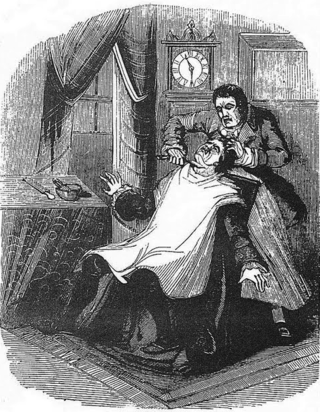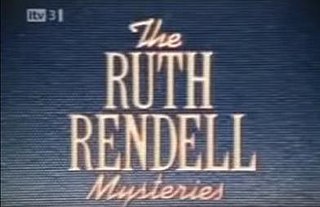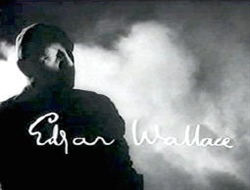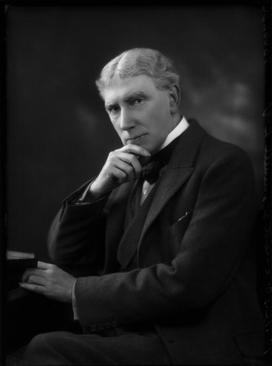Related Research Articles

Sweeney Todd is a fictional character who first appeared as the villain of the penny dreadful serial The String of Pearls (1846–1847). The original tale became a feature of 19th-century melodrama and London legend. A barber from Fleet Street, Todd murders his customers with a straight razor and gives their corpses to Mrs. Lovett, his partner in crime, who bakes their flesh into meat pies. The tale has been retold many times since in various media.

Scooby-Doo is an American media franchise owned by Warner Bros. Entertainment and created in 1969 by writers Joe Ruby and Ken Spears through their animated series, Scooby-Doo, Where Are You!, for Hanna-Barbera. The series features four teenagers: Fred Jones, Daphne Blake, Velma Dinkley, and Shaggy Rogers, and their talking Great Dane named Scooby-Doo, who solve mysteries involving supposedly supernatural creatures through a series of antics and missteps, while traveling using a brightly colored van called the "Mystery Machine". The franchise has several live-action films and shows.

Suspense is a radio drama series broadcast on CBS Radio from 1940 through 1962.

Prospero is a fictional character and the protagonist of William Shakespeare's The Tempest.

"The Tell-Tale Heart" is a short story by American writer Edgar Allan Poe, first published in 1843. It is told by an unnamed narrator who endeavors to convince the reader of the narrator's sanity while simultaneously describing a murder the narrator committed. The victim was an old man with a filmy pale blue "vulture-eye", as the narrator calls it. The narrator emphasizes the careful calculation of the murder, attempting the perfect crime, complete with dismembering the body in the bathtub and hiding it under the floorboards. Ultimately, the narrator's actions result in hearing a thumping sound, which the narrator interprets as the dead man's beating heart.
Inner Sanctum Mystery, also known as Inner Sanctum, is a popular old-time radio program that aired from January 7, 1941, to October 5, 1952. It was created by producer Himan Brown and was based on the imprint given to the mystery novels of Simon & Schuster. In all, 526 episodes were broadcast.

Lights Out is an American old-time radio program devoted mostly to horror and the supernatural.

CBS Radio Mystery Theater is a radio drama series created by Himan Brown that was broadcast on CBS Radio Network affiliates from 1974 to 1982, and later in the early 2000s was repeated by the NPR satellite feed. In New York City it was not aired by the then all-news WCBS but by its originating station, WOR, which produced and announced it as simply Radio Mystery Theater.

Father Brown is a fictional Roman Catholic priest and amateur detective. He is featured in 53 short stories by English author G. K. Chesterton, published between 1910 and 1936. Father Brown solves mysteries and crimes using his intuition and keen understanding of human nature. Chesterton loosely based him on the Rt Rev. Msgr John O'Connor (1870–1952), a parish priest in Bradford, who was involved in Chesterton's conversion to Catholicism in 1922. Since 2013, the character has been portrayed by Mark Williams in the ongoing BBC television series Father Brown.

The Ruth Rendell Mysteries is a British television crime drama series, produced by TVS and later by its successor Meridian Broadcasting, in association with Blue Heaven Productions, for broadcast on the ITV network. Twelve series were broadcast on ITV between 2 August 1987 and 11 October 2000. Created by author Ruth Rendell, the first six series focused entirely on her main literary character, Chief Inspector Reg Wexford, played by George Baker. Repeat airings of these series changed the programme's title to The Inspector Wexford Mysteries. However, later series shifted focus to other short stories previously written by Rendell, with Wexford featuring in only three further stories, in 1996, 1998 and 2000. When broadcast, these three stories were broadcast under the title Inspector Wexford.

An anthology series is a written series, radio, television, film, or video game series that presents a different story and a different set of characters in each different episode, season, segment, or short. These usually have a different cast in each episode, but several series in the past, such as Four Star Playhouse, employed a permanent troupe of character actors who would appear in a different drama each week. Some anthology series, such as Studio One, began on radio and then expanded to television.
"Markheim" is a short story by Robert Louis Stevenson, originally prepared for the Pall Mall Gazette in 1884, but published in 1885 in The Broken Shaft: Tales of Mid-Ocean as part of Unwin's Christmas Annual. The story was later published in Stevenson's collection The Merry Men and Other Tales and Fables (1887).

Carlton Errol Morse was a Louisiana-born producer/journalist best known for his creation of the radio serial One Man's Family, which debuted in 1932 and ran until 1959 as one of the most popular as well as long-running radio soap operas of the time. He also was responsible for the radio serial I Love a Mystery. A radio legend, he experimented with television and published three novels. Morse is considered by many to be one of the best radio scriptwriters.

The Edgar Wallace Mysteries is a British second-feature film series mainly produced at Merton Park Studios for Anglo-Amalgamated. There were 48 films in the series, which were released between 1960 and 1965. The series was screened as The Edgar Wallace Mystery Theatre on television in the United States.
Donald F. Glut is an American writer, motion picture film director, and screenwriter. He is best known for writing the novelization of the second Star Wars film, The Empire Strikes Back (1980).

National Geographic Explorer is an American documentary television series that originally premiered on Nickelodeon on April 7, 1985, after having been produced as a less costly and intensive alternative to PBS's National Geographic Specials by Pittsburgh station WQED. The first episode was produced by WQED and featured long-time Explorer cameraman Mark Knobil, who is the few staff members with the franchise during all 24 seasons. The program is the longest-running documentary television series on cable television. Presented every Sunday from 5:00 pm to 8:00 pm, the original series was three hours in length, containing five to ten short films. Although the National Geographic Society had been producing specials for television for 20 years prior to Explorer, the premiere of the series required an increase in production from 4 hours of programming a year to 156 hours. Tim Cowling and Tim Kelly were the executive producers for the series during this transition.

The Suicide Club is an 1878 collection of three 19th-century detective fiction short stories by Robert Louis Stevenson that combine to form a single narrative. First published in the London Magazine in 1878, they were collected and republished in the first volume of the New Arabian Nights.

Elliott O'Donnell was an English author known primarily for his books about ghosts. He claimed to have seen a ghost, described as an elemental figure covered with spots, when he was five years old. He also claimed to have been strangled by a mysterious phantom in Dublin.

Tales of Tomorrow is an American anthology science fiction series that was performed and broadcast live on ABC from 1951 to 1953. The series covered such stories as Frankenstein starring Lon Chaney Jr., 20,000 Leagues Under the Sea starring Thomas Mitchell as Captain Nemo, and many others.

The Outer Limits is an American television series that was broadcast on ABC from September 16, 1963, to January 16, 1965, at 7:30 PM Eastern Time on Mondays. It is often compared to The Twilight Zone, but with a greater emphasis on science fiction stories. It is an anthology of self-contained episodes, sometimes with plot twists at their ends.
References
- 1 2 Colavito, Jason (2008). Knowing fear: science, knowledge and the development of the horror genre (illustrated ed.). McFarland & Company. p. 280. ISBN 978-0-7864-3273-8.
- ↑ Wheatley, Helen. Gothic Television (Manchester University Press 2006) pp. 35–36.